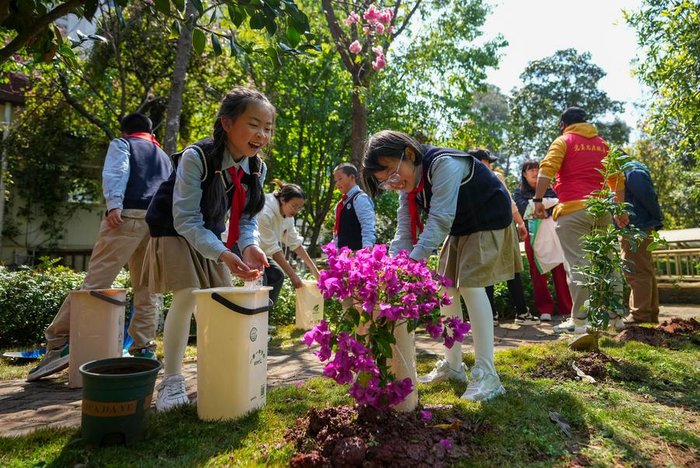Jilin's Qipao Hall Preserves Manchu Cultural Tradition
In Jilin Qipao Hall of Jilin City, Jilin Province, the employees are tasked with selecting materials, fastening buttons, crafting inlays, cutting fabrics, and sewing inlays and trims. They are artists, designers, and keepers of cultural tradition.
Jilin City is one of the birthplaces of the ethnic minority Manchu people. The Manchu cheongsam, a type of qipao, integrates multiple intangible cultural heritage techniques.
Zhu Wenjun, a municipal-level inheritor of traditional Manchu embroidery, founded the hall in 2005.
Nearly 20 years later, the hall has over 50 employees and an annual output value of 16 million yuan ($2.23 million). More than thirty percent of orders come from abroad.
"In recent years, with the popularity of Chinese-style clothing, Manchu cheongsams have also attracted young consumers," said Zhu. "Some young people will make specific requests to showcase their individuality."
To adapt to new changes, the designers at the cheongsam hall have started incorporating modern elements and fashion design.
"In some situations where cheongsams may not be suitable, we have developed cheongsam-related products such as bags and outerwear with buttons and trims," she said.
(Source: chinadaily.com.cn)
Editor: Wang Shasha
Please understand that womenofchina.cn,a non-profit, information-communication website, cannot reach every writer before using articles and images. For copyright issues, please contact us by emailing: website@womenofchina.cn. The articles published and opinions expressed on this website represent the opinions of writers and are not necessarily shared by womenofchina.cn.






.jpg)

 WeChat
WeChat Weibo
Weibo 京公网安备 11010102004314号
京公网安备 11010102004314号